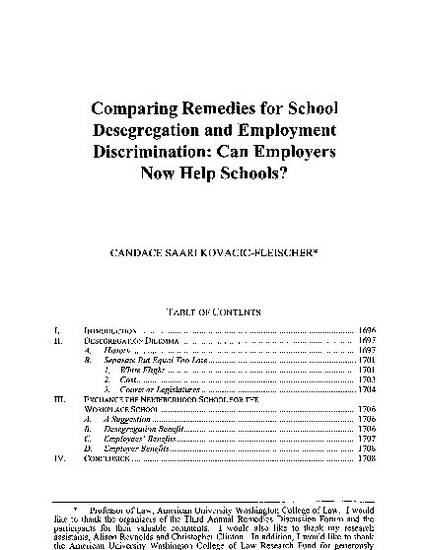
Article
Comparing Remedies for School Desegregation and Employment Discrimination
San Diego Law Review
(2004)
Abstract
INTRODUCTION: Ten years after the Supreme Court decided Brown v. Board of Education, now a symbol of the beginning of the end of racial discrimination, Congress passed Title VII of the Civil Rights Act of 1964. Title VII opened the workplace to all races and women in ways that had not previously existed. While discrimination in the workplace has not disappeared in the forty years since Title VII's enactment, one sees minorities and women in a greater variety of jobs, and at higher levels, than one would have seen a generation ago. The promise of Brown, however, has not been achieved. When one looks at public schools fifty years after Brown, a great number are still racially segregated, and those whose populations are made up primarily of minorities are often impoverished. Both Brown and Title VII identified the right to be free from discrimination, but that right was not self implementing. Eliminating discrimination required, and requires, effective remedies.
Keywords
- race,
- women,
- civil rights,
- segregation,
- school,
- desegregation,
- minorities,
- impoverished,
- congress
Disciplines
Publication Date
Fall 2004
Citation Information
Candace Kovacic-Fleischer. "Comparing Remedies for School Desegregation and Employment Discrimination" San Diego Law Review Vol. 41 (2004) p. 1695 ISSN: 0036-4037 Available at: http://works.bepress.com/candace_kovacic_fleischer/10/
